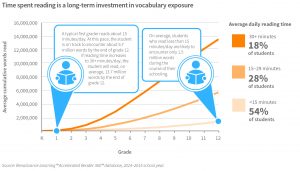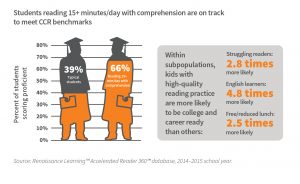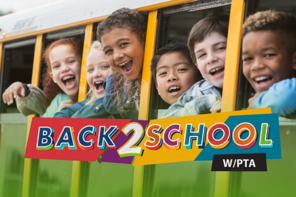Reading gives us two gifts—the gift of understanding and the gift of feeling understood. Every new book you read shows you another life, another time or place or way of being. Every new book also assures you that yes, other people have felt as afraid, as embarrassed, as sad, as giddy and as joyful as you have felt.
Through reading, we learn empathy, compassion, respect and understanding. How lucky we are as parents to be able to give our children those skills by doing something as simple and enjoyable as reading.
In the U.S., one-third of all public school fourth graders score below basic reading levels and nearly half of all parents express concern that their children do not read enough for fun. While these numbers are staggering, the solution is simple.
Emilie Buchwald, an award-winning children’s author, once said “Children are made readers on the laps of their parents,” and research shows that when families read together, learning happens and memories are made that last a lifetime.
The Vocabulary Booster
 Creating a daily family reading habit gives children a boost over their peers. According to the annual “What Kids Are Reading” report by Renaissance Learning, students who read less than 15 minutes per day will only encounter about 1.5 million words by the time they get to grade 12, but students who read 15 minutes or more per day will encounter 5.7 million words by grade 12.
Creating a daily family reading habit gives children a boost over their peers. According to the annual “What Kids Are Reading” report by Renaissance Learning, students who read less than 15 minutes per day will only encounter about 1.5 million words by the time they get to grade 12, but students who read 15 minutes or more per day will encounter 5.7 million words by grade 12.
And the number of words students are exposed to increases exponentially with each additional minute they read.
Time spent reading together as a family is a long-term investment in vocabulary exposure. Family reading experiences give children the chance to ask questions about words they don’t understand, which leads to more effective reading.
In order for students to build and strengthen their vocabularies, children need to be repeatedly exposed to a variety of words in a variety of contexts. Reading together every day allows parents to explain each new meaning of a vocabulary word their children come across. It also encourages children to read more on their own—in fact, according to a Scholastic study “Kids’ Reading in the Digital Age”, 73% of children say they get ideas from their parents for books to read for fun.
The Career-Maker (or Breaker)
 Over time, reading practices contribute to whether or not a child reaches college- and career-readiness (CCR) benchmarks. According to Renaissance Learning’s annual report, only about 39% of typical students meet CCR benchmarks for their grade.
Over time, reading practices contribute to whether or not a child reaches college- and career-readiness (CCR) benchmarks. According to Renaissance Learning’s annual report, only about 39% of typical students meet CCR benchmarks for their grade.
By contrast, 66% students who engaged in a fair amount (15 minutes or more) of high-quality, daily reading practice (such as daily family reading time) meet CCR benchmarks with ease.
This increased likelihood to be college- and career-ready holds true across student populations, including those who struggle with reading, are English language learners or who receive free/reduced lunch.
The gap between typical students and students who read every day shows that while in-class instruction is of course essential to closing CCR achievement gaps, making sure students spend enough time engaging in high-quality reading experiences like daily family reading time is a key part of the solution.
Corinne Canning is the editorial and marketing specialist at National PTA.





